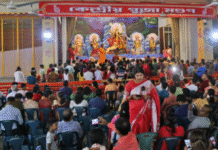
The Appellate Division of the Supreme Court on Sunday reinstated the constitutional provisions for Supreme Judicial Council, clearing the way for the removal of Supreme Court judges for misconduct or incapacity.
A six-member bench, headed by chief justice Syed Refaat Ahmed, pronounced its verdict upholding the highest court judgement that scrapped the 16th amendment to the constitution.
The top court restored the council that was originally established by the Fifth Amendment to the constitution in 1979 during the Bangladesh Nationalist Party rule.
The verdict also paved the way for the removal of the holders of constitutional offices, including the chief election commissioner, the chairman and members of the Public Service Commission, as well as top officials in statutory bodies, including the Anti-Corruption Commission, the National Human Rights Commission and the Information Commission, for misconduct or incapacity, according to legal experts.
This decision put an end to a decade-long legal battle over the process for the removal of Supreme Court judges.
The controversy began in 2014 when the Awami League government, amid widespread criticism, passed the 16th amendment to the constitution, restoring the parliament’s authority to remove SC judges.
On May 5, 2016, the High Court struck down the amendment reinstating the Supreme Judicial Council process for removal of SC judges.
The government later preferred appeal and the Appellate Division upheld the High Court judgement on July 3, 2017.
The government filed a fresh petition on December 24, 2017, seeking a review of the Appellate Division judgement.
The Appellate Division bench that disposed of the review petition on Sunday also included Justice Md Ashfaqul Islam, Justice Zubayer Rahman Chowdhury, Justice Syed Md Ziaul Karim, Justice Md Rezaul Haque, and Justice SM Emdadul Hoque.
The chief justice delivered the verdict after hours of hearing, stating that the provisions of Article 96, as they had been before the 16th Amendment, were fully restored, addressing all ambiguities.
The article states that a judge shall not be removed from office except in accordance with the provisions outlined in this
article.
The Supreme Judicial Council comprises the chief justice and the two most senior Appellate Division judges. It is responsible for establishing a code of conduct for judges and investigating the capacity or conduct of any judge or official who cannot be removed from office except in the same manner as a Supreme Court judge.
If the president receives information from the council or any other source suggesting that a judge is unable to perform their duties due to physical or mental incapacity, or has committed gross misconduct, the president may direct the council to investigate and submit a report, according to the restored
Article 96.
If, following the inquiry, the council concludes that the judge is unfit to continue or has engaged in gross misconduct, the president shall order the judge’s removal from office.
A judge may also resign by submitting a written resignation to the president, according to the restored article 96(8) of the council.
As the Article 96 was revoked through 16th Amendment, the matter of resignation by a judge became ambiguous as no existing law covered the matter.
The court, however, asked the attorney general whether the verdict on the 16th Amendment would retain the 39-point code of conduct framed by the Appellate Division for the Supreme Court judges. The attorney general replied that it depended on the court’s discretion.
Following the verdict, attorney general Md Asaduzzaman informed reporters that there was now no legal barrier preventing the Chief Justice from initiating proceedings through the Supreme Judicial Council against the 12 High Court judges who had been kept out of the court for alleged misconduct.
The previous Awami League government had sought to restore the entire provision of Article 96 as it was in 1972 Constitution which granted the parliament the authority to remove Supreme Court judges, abolishing the entire provision of Article 96 incorporated in 1979 during the regime of then president Ziaur Rahman for the removal of the Supreme Court judges.
Attorney general Asaduzzaman mentioned during the hearing that among the 94 reasons presented in the petition, one significant issue was the restoration of the parliament’s power to remove judges.
‘I find no justification to support the reinstatement of parliamentary procedures for the removal of Supreme Court judges, as introduced by the 16th Amendment to the Constitution in 2014,’ said the attorney general.
Asaduzzaman said that the judiciary had emerged from the influence of corruption and politics through the upholding of the verdict on the cancellation of the 16th Amendment to the constitution.
He made the comments in response to questions from journalists at his office on Sunday.
He said that through the upholding of the verdict revoking the 16th Amendment to the constitution, the judiciary had moved to a place where it would be able to perform its duties independently.
Sunday’s verdict was indeed historic for the independence of the judiciary, he said.
The attorney general, however, said that a supplementary petition was filed with the Appellate Division to spell out if there were any ambiguities regarding the submission of a Supreme Court judge’s resignation to the president.
The interim government’s law adviser Asif Nazrul told reporters at his Secretariat office that the Supreme Court order opened a constitutional path to address the grievances of students and the public regarding certain Supreme Court judges accused of corruption.
The alleged judges acted as instruments of oppression under the previous fascist regime, he said.
On October 16, the Supreme Court administration announced that the chief justice decided to kept 12 High Court judges out of the court and would be placed on leave starting from October 20, following student protests over alleged judicial discrimination.
Aziz Ahmed Bhuiyan acknowledged the complexities involved in removing judges, stating that there is currently no law in place governing the process.
He further mentioned that the Chief Justice has scheduled a hearing for the Appellate Division’s review petition regarding the removal of judges on October 20, the first day of the Supreme Court’s new session.
The Constitution (16th Amendment) Bill, 2014, passed by Jatiya Sangsad on September 17, 2014, without opposition, empowered Parliament to impeach Supreme Court judges for ‘incapacity’ or ‘misconduct.’ The bill received presidential assent on September 22, 2014.
Supreme Court lawyer Manzil Murshid on behalf of nine Supreme Court lawyers challenged the legality of the Sixteenth Amendment, which effectively repealed the Fifth Amendment and replaced the Supreme Judicial Council—headed by the Chief Justice—with parliamentary authority to remove judges.
New Age









